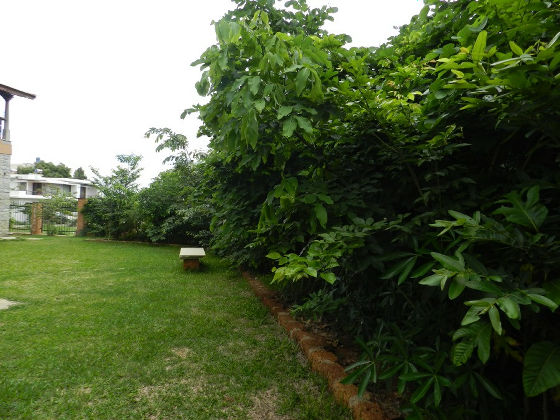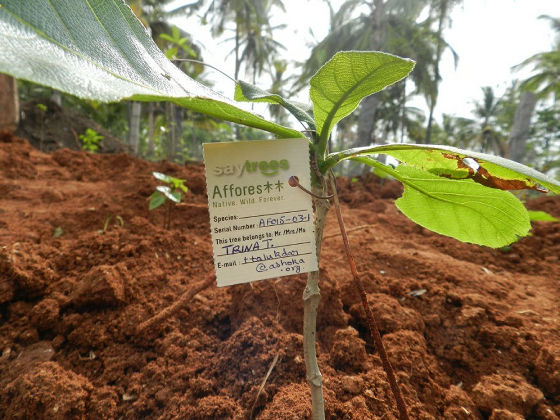Open source project "Afforestt" to grow the forest at tremendous speed

BySchub @
The progress of logging and desertification of tropical rainforests is a major problem to be considered on a global scale. In order to maintain the earth full of greenery, you can grow the forest at a speed 10 times higher than usualLatent natural vegetation"Indian men who have learned the theory challenge the sharing of global forests by sharing knowledge on the Internet.
How to Grow a Forest Really, Really Fast - TED Fellows - Medium
https://medium.com/ted-fellows/how-to-grow-a-forest-really-really-fast-d27df202ba09
When Indian Svendiu Sharma worked in the assembly line of Toyota's India factory in 2008, a Japanese famous ecologistAkira MiyawakiI met him. Mr. Miyawaki said that he visited the factory to teach how to plant trees and make forests on the premises of Toyota's India factory. Mr. Miyawaki showed the theory of "latent nature vegetation" that makes forest using plants rooted in the land, Mr. Sharma was impressed, volunteered to apprentice, learned his methodology.
Mr. Sharma who studied with Mr. Miyawaki planted 42 kinds · 300 trees in the backyard of 93 square meters in the house and succeeded in changing the earth to the forest three years later. Mr. Sharma who made this "backyard forest" is a nonprofit organization that quits Toyota and advises tree planting methods to all clients including citizens, companies, and governmentAfforestt"Was established.

Generally, in the state of "natural" where people's hands do not enter, the plants that make up the forest repeat prosperity and selection for about 600 to 1000 years to settle as a land-specific species over time Become. On the other hand, if human being artificially planted according to the usual way, it is possible to create forest with self-regenerating ecosystem in about 100 years. However, Mr. Miyawaki's potential latent vegetation law seems to be able to build an ecosystem with an overwhelming speed of 10 times that of general artificial afforestation.
Based on the latent natural vegetation law Sharma learned from Mr. Miyawaki, Afforestt has launched the following six principles.
◆ 1: Soil making

The first step is to investigate the soil and to identify something that is missing nutrients.
◆ 2: Environment survey

By investigating soil quality and climate, it is important to identify what kind of plants are likely to grow. The plant selected according to the data of the native species will be finally selected after it is determined whether it grows well healthy.
◆ 3: Selection of fertilizer

For fertile soil, fertilizer is also important. In Afforestt there is a constraint that what can be used as fertilizer is that it can procure from the area within 50 kilometers from the land. In addition, Sharma thinks that anything such as bird droppings, mud, byproducts of sugar making etc. can become fertilizer.
◆ 4: Tree planting

After improving the soil to a depth of 1 meter, it is time to plant trees. For planting trees, we use 80 centimeters of seedlings and plant 3 to 5 seedlings per square meter, so it is a point to concentrate considerably. Moreover, it does not pull out the wood which did not grow without growing, it seems that it is left as it is the natural world.
◆ 5: Minimum afforestation area

The minimum area required for building one forest is 100 square meters. This is because the light enters the woods without too much area and the fallen leaves do not rot. Corrupt fallen leaves turn into fertilizer and produce rich soil, which becomes the foundation of the future growth of the forest. In addition, trees growing overcrowded enough to be overcrowded will grow to compete for light and realize explosive growth.
◆ 6: independent

For about two or three years until the forest can enter into a self-regenerating cycle, it is necessary for human beings to lend a hand with watering or thinning out. However, as much as possible, it is important not to modify the ecosystem.
Apart from these six major principles, there are also detailed rules such as "planting fruits" and "planting 50 to 100 different plants".
Afforestt has planted 43,000 trees with clients so far and has disclosed the method of tree planting. In the future, everyone can post technology and knowledge so that people can use the tree-planting law spreading the forest with further explosion speed in the world, plans to make it into a cloud source (open source) so that everyone can view it Thing. Sharma wants to build a database that collects data on native plants and inhabiting wild animals, soil environments and climates in each region within a few years.
You can see how Sharma made a presentation at TED with the following movie.
Shubhendu Sharma: How to grow a tiny forest anywhere - YouTube
Related Posts:







